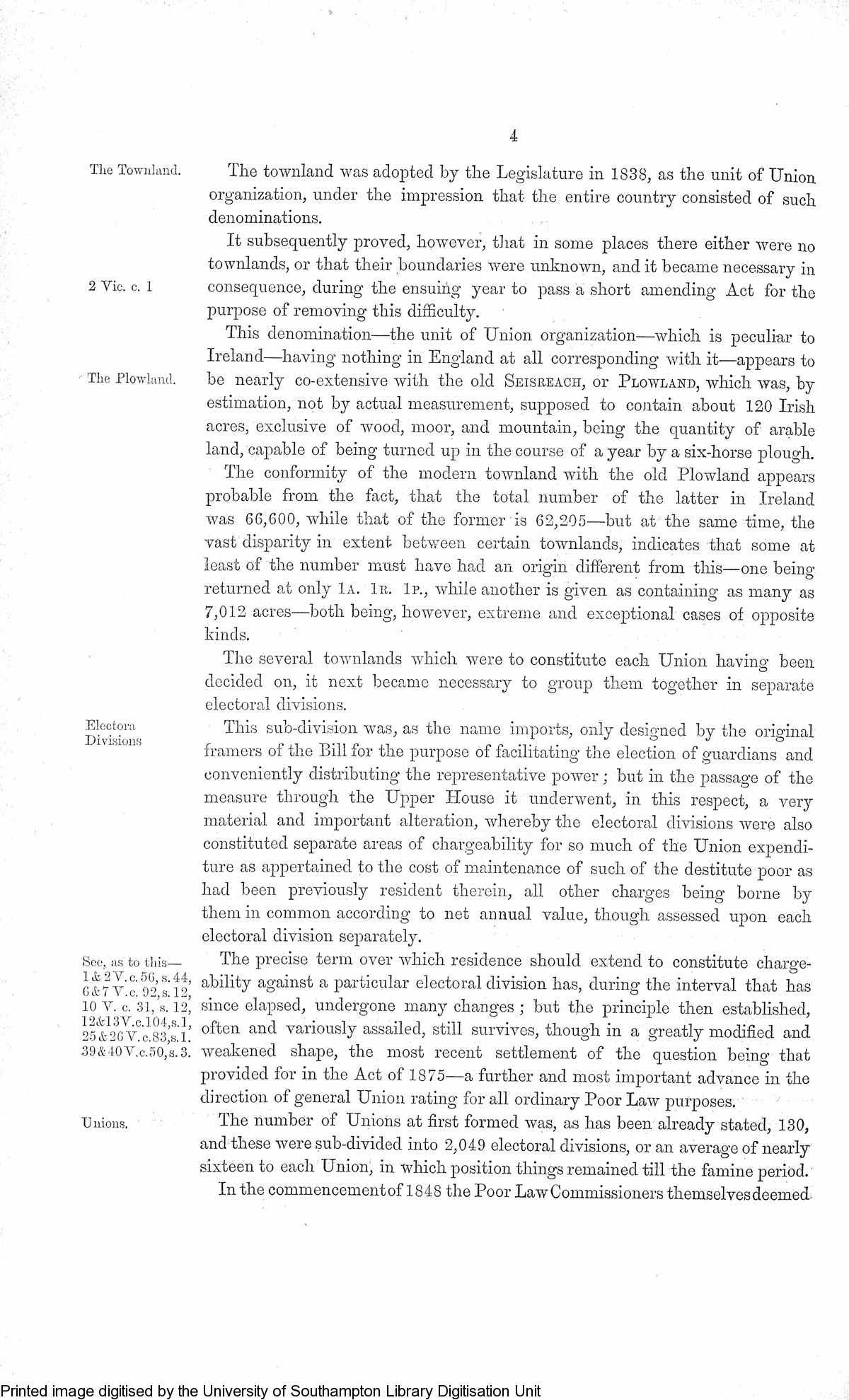.
PART I.
1. THE UNION.
a. The Area.
The Union may be now said to constitute the most important of the several
organizations into which the Local Government of Ireland divides itself—for
though the county expenditure, under the Grand Jury system is still somewhat
greater, a very large proportion of this is made up of sums which, either by
special enactment, or by directions, which in particular cases the Lord Lieu¬
tenant is authorized to issue, become the subject of compulsory presentment,
and over the application of which the local authorities consequently exercise,
in reality, no control whatever—while the tendency of modern legislation has,
year by year, steadily set in the direction of availing of the many advantages
presented by Union organization and machinery, for the performance of
various new and important functions, to which more particular reference will
hereafter be made.
The Irish Poor Relief Act of 1838 was drawn, in all its leading features, i & 3 vic. c. 5G.
on the lines laid down in the English Amendment Act of 1834, but those 4&5Wm.IV.c.76.
who were charged with the duty of forming the Unions created under the
former, enjoyed the incalculable advantage of having to deal with an absolutely
new country, and of thus being entirely freed from the various irritating
restraints and impediments encountered in the sister country, owing to the
existence there of other and long-established organizations, which it was not
possible to disregard in the consideration of the new arrangements.
The main principle observed in determining the limits of the several Irish The Unions.
Unions, was to take as a centre the chief market town in each part of the
country, and attach to it the adjoining rural district, naturally and by
practice belonging to it, within as far as possible a radius of ten miles, or
thereabout.
Starting with this general object in view, the entire country, without any
exception, was ultimately partitioned into 130 separate Poor Law Unions, as
nearly uniform in size and population, as the great difference existing in local
circumstances would conveniently permit; but. Poor Law administration, and
the equitable adjustment of the taxation incidental to it, being the sole pur¬
pose of the new organization, no very strict attention was at that time given
in practice to rendering the boundaries adopted coterminous with the ancient
and established ones of either counties or baronies.
The only limit in this respect imposed by law, was that no townland could 16 2 Vic. c. 5G,
be divided—hence the Irish Unions are to be regarded as being simply
aggregations of townlands as those of England are of parishes or quasi
parishes.
B

